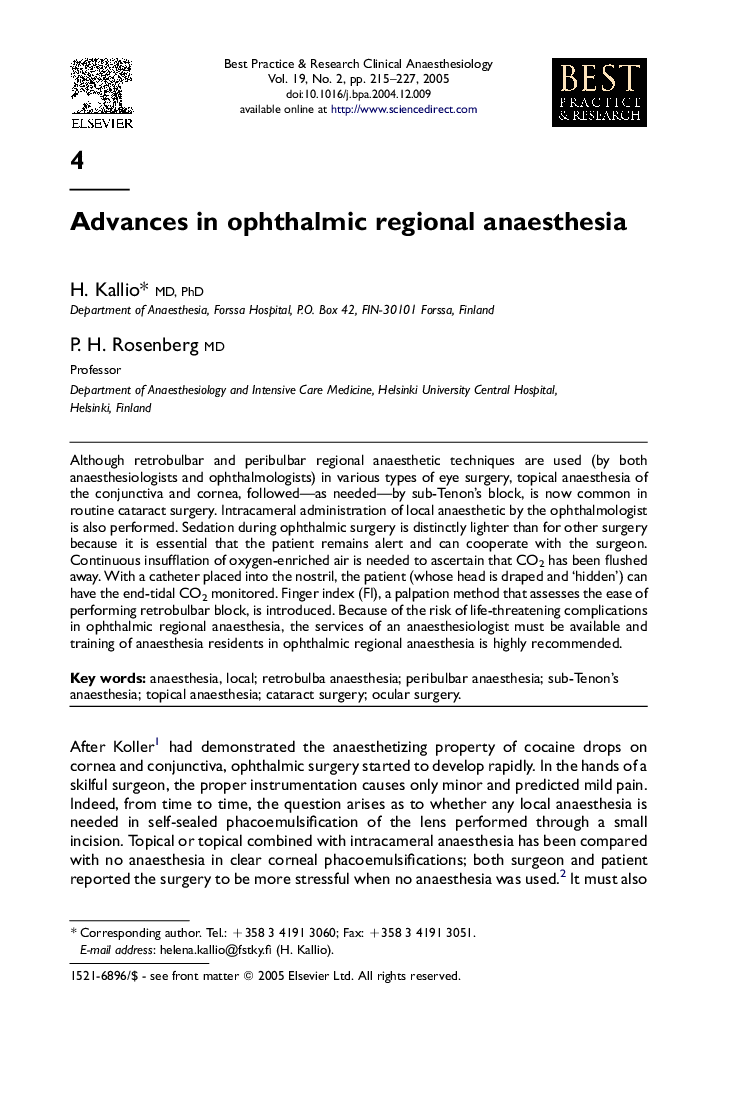| Article ID | Journal | Published Year | Pages | File Type |
|---|---|---|---|---|
| 9092597 | Best Practice & Research Clinical Anaesthesiology | 2005 | 13 Pages |
Abstract
Although retrobulbar and peribulbar regional anaesthetic techniques are used (by both anaesthesiologists and ophthalmologists) in various types of eye surgery, topical anaesthesia of the conjunctiva and cornea, followed-as needed-by sub-Tenon's block, is now common in routine cataract surgery. Intracameral administration of local anaesthetic by the ophthalmologist is also performed. Sedation during ophthalmic surgery is distinctly lighter than for other surgery because it is essential that the patient remains alert and can cooperate with the surgeon. Continuous insufflation of oxygen-enriched air is needed to ascertain that CO2 has been flushed away. With a catheter placed into the nostril, the patient (whose head is draped and 'hidden') can have the end-tidal CO2 monitored. Finger index (FI), a palpation method that assesses the ease of performing retrobulbar block, is introduced. Because of the risk of life-threatening complications in ophthalmic regional anaesthesia, the services of an anaesthesiologist must be available and training of anaesthesia residents in ophthalmic regional anaesthesia is highly recommended.
Related Topics
Health Sciences
Medicine and Dentistry
Anesthesiology and Pain Medicine
Authors
H. MD, PhD, P.H. (Professor),
